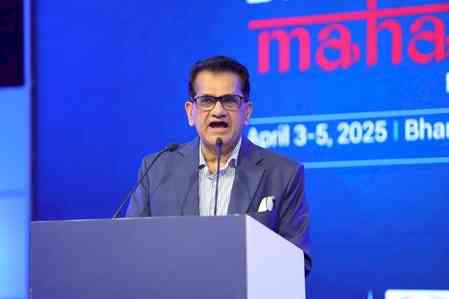Despite hiccups, demand prospects for commercial appear favorable: Realtors
According to experts, the second wave of coronavirus might strain credit metrics for developers with a broad portfolio of recently completed assets or about to be completed

Private equity investment inflows into the Indian real estate sector totaled USD 1.9 billion (INR 135 billion) in Q1 2021, according to a recent study by Savills India. Investors are regaining confidence after the pandemic-related slowdown, as the first quarter of 2021 has already seen nearly a third of the investment inflows seen in the entire year of 2020. Commercial office assets remained the frontrunner in Q1 2021, accounting for more than half (58%) of all investment, despite the emergence of the remote-working culture.
Realtors term it a healthy development and say that the commercial segment is a necessity as it directly affects the economic cycle. “If the social distancing standard becomes a habit after the second wave, consumers can need larger spaces to operate from in the long run. People are also likely to demand better protection, health, and safety facilities and amenities,” says Sagar Saxena, Project Head, Spectrum Metro.
Yukti Nagpal, Director, Gulshan, says, “It goes without saying that the economy has adversely been impacted by the lockdown, and the real estate commercial sector in question has faced a great deal of challenges. However, there are ways to meet genuine demand. These include innovative marketing strategies to communicate relevant stories through digital transformation. The pandemic has reinforced the value of best practices, such as staying in contact with consumers, reassuring them that we truly care, and maximizing thec use of technology. Various initiatives including digital tours of projects, experiential videos, virtual site-visits and videos showing the construction updates from the comfort of your home are introduced. These technologies which are otherwise used infrequently have now become the standard practice and need of the hour.”
Commenting on the comparatively good run of the commercial segment, Nayan Raheja of Raheja Developers, says, “The commercial sector has always been a source of growth and will continue to be so in the future. The importance of commercial infrastructure, such as malls and offices, for economic development cannot be overstated. The recent sale of commercial properties indicates that investors and buyers recognize the importance of this segment to people's and the country's well-being.”
Adds Akshay Taneja, MD, TDI Infratech, “In the current scenario, the commercial segment is also looking at increased investment by NRIs as a result of COVID 19. Because of the depreciation of the rupee, investment prospects for NRIs have become significantly more lucrative. Investors with real estate expertise have shifted their focus to commercial real estate, which provides a higher yield and appreciation.”
Since last year, the fear has been that there might be a shift in customer demands looking at the fact that offices may not be operational for many more months and even if they open, full strength won’t be there. However, the office segment was the least affected. In fact, a latest analysis by ICRA notes that “In comparison to other segments within the real estate sector, the office leasing segment witnessed the least impact on operational cash flows during FY2021. Collections from existing leases remained largely intact, with no major challenges observed in realisation of the rents billed. This was despite very low proportion of employees returning to the workspaces, with reported employee-occupancy levels between 10-20% at most of the IT and business parks.”
“Particularly in challenging times, people need offices; even when they are not permitted to go out in groups, they must shop for the necessities of life. And till the time these necessities are there, the only shift in demand would be to get bigger premises for better returns,” says Amit Thakran, Director, Value Homz.
According to experts, the second wave of coronavirus might strain credit metrics for developers with a broad portfolio of recently completed assets or about to be completed. Occupancies in newly built properties will remain under pressure unless new leasing demand picks up sharply. Buffers in the form of longer debt maturities or financial stability through low-leverage assets will be critical in protecting the credit profile. Adds Harvinger Singh Sikka, MD, Sikka Group, “Despite the risks, long-term demand prospects for the sector appear favorable, given that the pandemic has had no significant effect on the occupier base in such properties. Furthermore, India continues to be a very cost-competitive destination for large multinational corporations (MNCs), which have historically driven most of the demand in the sector.”


 cityairnews
cityairnews 








